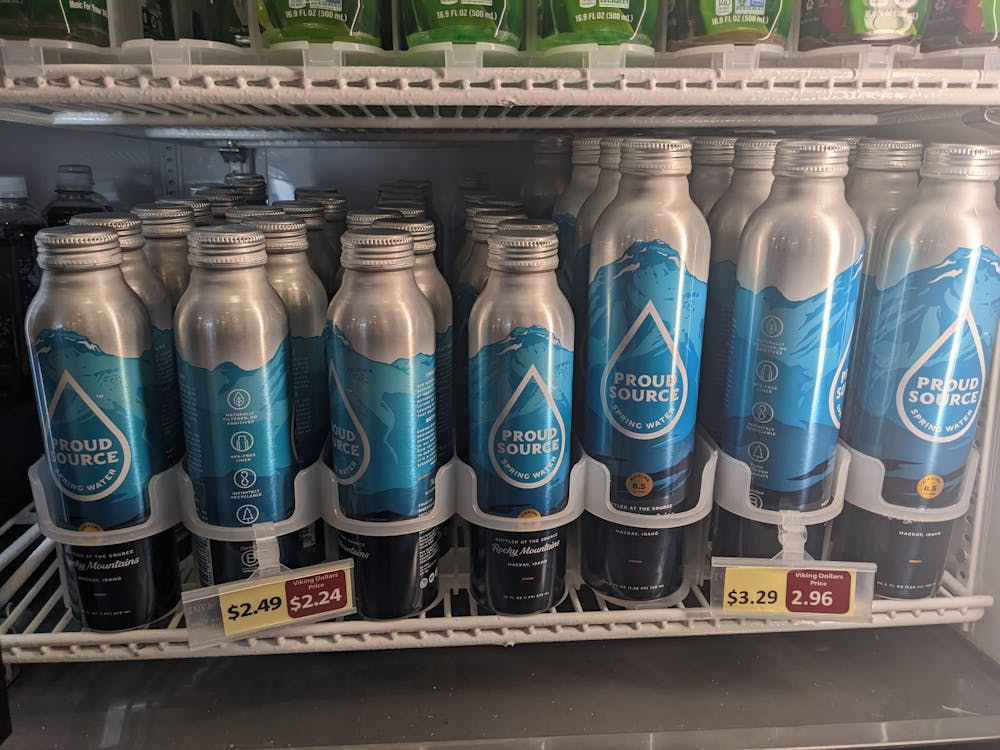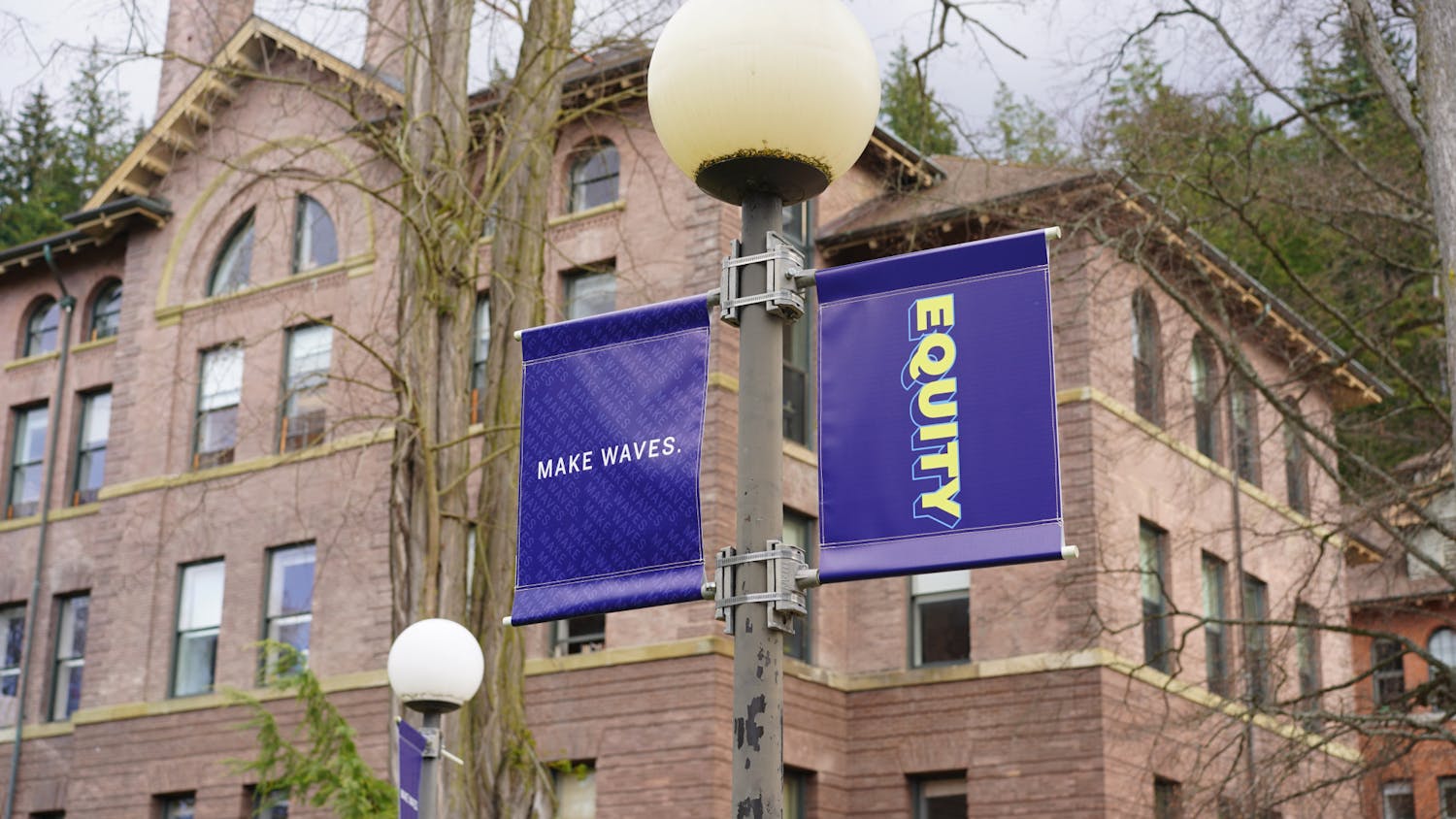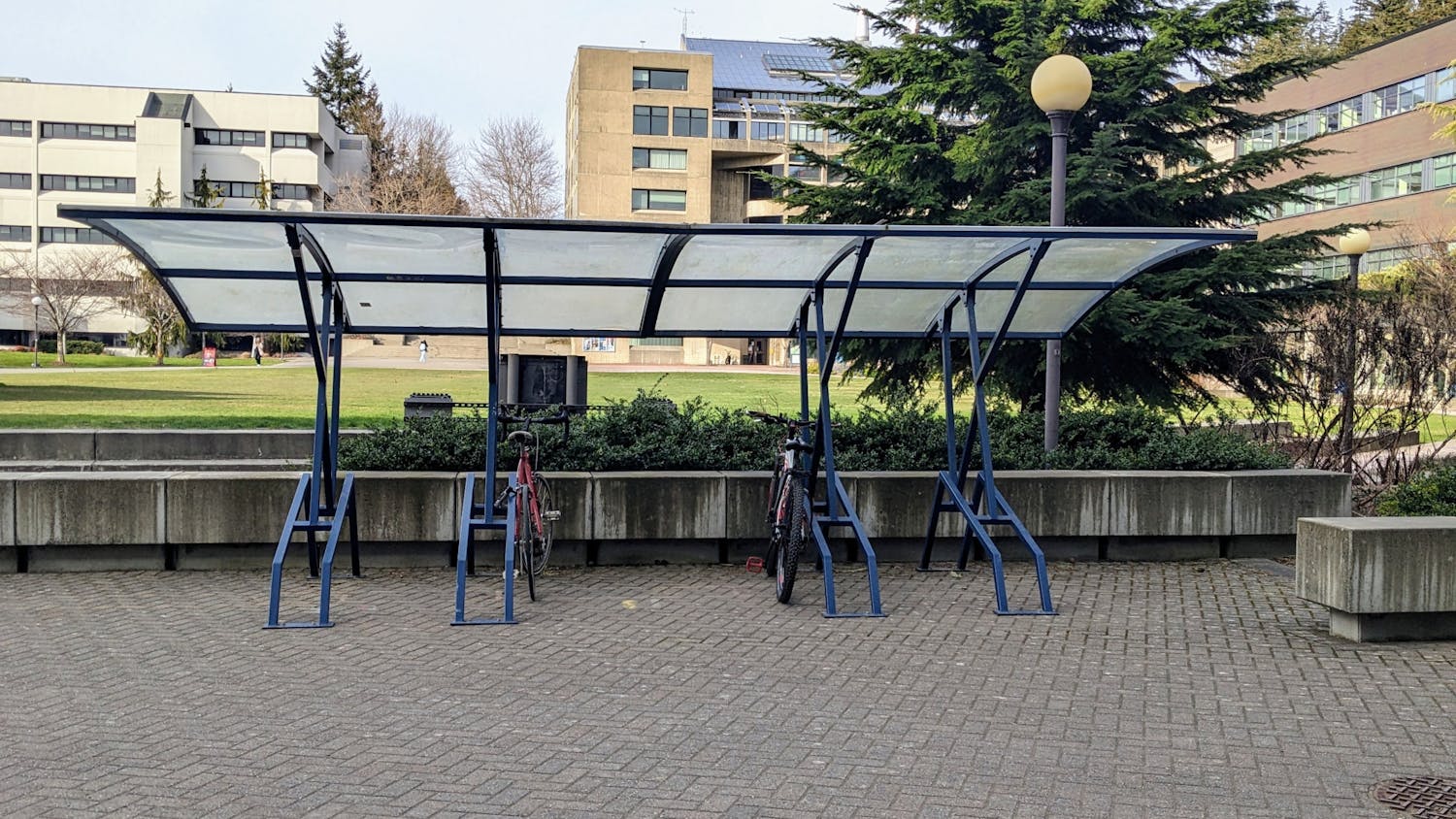Bottled water returned to Western Washington University’s markets and vending machines last spring in the form of a can. After the sale of plastic water bottles were halted on campus in the spring of 2014, students lobbied for the return of bottled water last year after concerns about the safety of Western’s drinking fountains were voiced.
“There was a subset of students who were concerned through COVID-19 about the safety of drinking water from water fountains,” said Lindsey MacDonald, associate director for the Sustainability Engagement Institute at Western. “Folks were interested in water for purchase because they didn’t like the water fountain.”
According to a Western Today article released in March of 2014, the initial effort to ban plastic water bottles began in 2012, with a student initiative that claimed the selling of bottled water was an unsustainable practice. The student initiative urged Western to consider discontinuing sales, and when voted on by Western students, 73% approved.
“Plastic is not sustainable and Western prides itself on being an institute that values sustainability,” said Maia Heffernan, fourth-year student and staff ambassador for the Sustainability Engagement Institute at Western. “This student group was looking at [bottled water] being sold and was thinking this doesn’t really reflect that.”
Despite a water bottle ban policy drafted by the Students for Sustainable Water in 2014, Western never formally banned plastic water bottles. However, on April 1, 2014, Western halted all sales of plastic water bottles in vending machines and markets, making it the largest university to do so.
During this period in time, the only option for water on campus was the drinking fountains and the bathroom faucets. Water samples from multiple buildings across campus showed lead levels to be unusually high, according to a The Front article released in April 2019. According to that article, widespread tests began after a test in Arntzen Hall discovered the lead level to be above federal standards.
In the decade following, more tests were performed and many of the water sources on campus have been replaced. However, according to MacDonald, some students still believe the water quality to be poor.
“There is a misperception around quality of drinking water,” MacDonald said. “Some students with some misinformation believed that there were not good drinking water spots on campus.”
In 2019, Western again performed widespread testing of its water for lead levels. As of April 2022, over 900 locations have been sampled and about 95% of samples are below the federal level, according to Western’s Drinking Water Management page.
As students returned to Western in the later stages of the COVID-19 pandemic, some considered the drinking fountains unsafe. They approached the Associated Students at Western with the idea of bringing back water in the campus markets.
“[AS] wanted to test out a pilot program to see what the usage would be,” Heffernan said. “If we started selling water in the vending machines or in the marketplace, are people going to buy it?”
Working with Walton Beverage, Western returned bottled water to the market shelves and vending machines, but in a canned form. MacDonald noted that Western made it a point to remain plastic-free with bottled water.
“Some of the things we think about when making that assessment from a purely carbon emissions perspective is what are the materials and how many times can those materials be recycled,” MacDonald said.
Mark Peyron, an associate professor in the Engineering and Design Department at Western, wrote in an email that “the most common material used for water bottles is PET, and this is a ‘molecular’ material. Such materials can degrade through reprocessing, but they often retain qualities to keep them viable in many applications, either alone or when blended with new materials.”
PET, or polyethylene terephthalate, is a common material found in clothing fibers and food and beverage containers. PET is the most commonly recycled form of plastic.
“Of these two materials, aluminum has an established system of both collection and remanufacturing,” Peyron wrote. “PET is collected at a fairly high rate, but there is not as widespread of a remanufacturing marketplace.”
While plastic water bottles are recyclable, the methods to recycle them are not as abundant as aluminum.
In addition, the aluminum cans appear eco-friendly to students such as Lauren Shultz, a second-year student at Western.
“When I forget my water bottle or don’t have it, I will buy the water in the cans,” Shultz said. “I think it’s more eco-friendly [than plastic] which makes it the only reason I usually buy it.”
This is something MacDonald says the Western team considered when it came to recycling.
“[The team] had an assumption that students would know to recycle aluminum more than they would know to recycle plastic,” MacDonald said. “They also believed that students could reuse the aluminum cans that they got as water bottles if they didn’t have water bottles.”
MacDonald notes that there are still significant areas needing further education for educating Western students.
“One is education around helping people understand that we have safe drinking water here,” MacDonald said. “The second is just education around the sustainability piece.”
Western’s Sustainability Engagement Institute is located in High Street Hall on the northwest side of campus, and its doors are open for anyone interested in discussing the topic of bottled water at Western.
“We are happy to talk to anybody who's interested in this stuff,” MacDonald said.
Ben Stainbrook (he/him) is a campus news reporter for the The Front during the 2022-2023 winter quarter at Western. He is a second-year student and is planning to major in visual journalism. Away from reporting, he enjoys taking photographs, playing games and making music.
You can message him @benstainbrook.thefront@gmail.com






